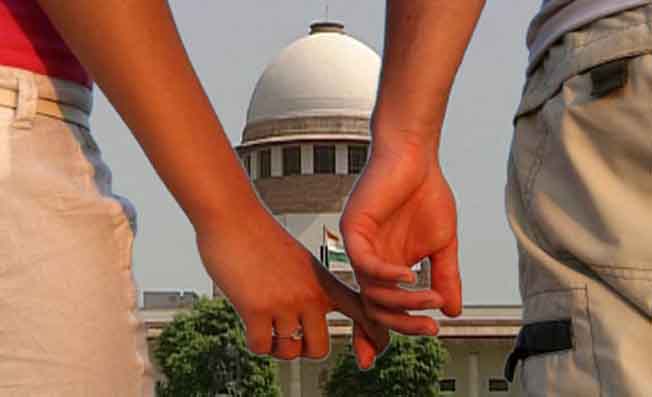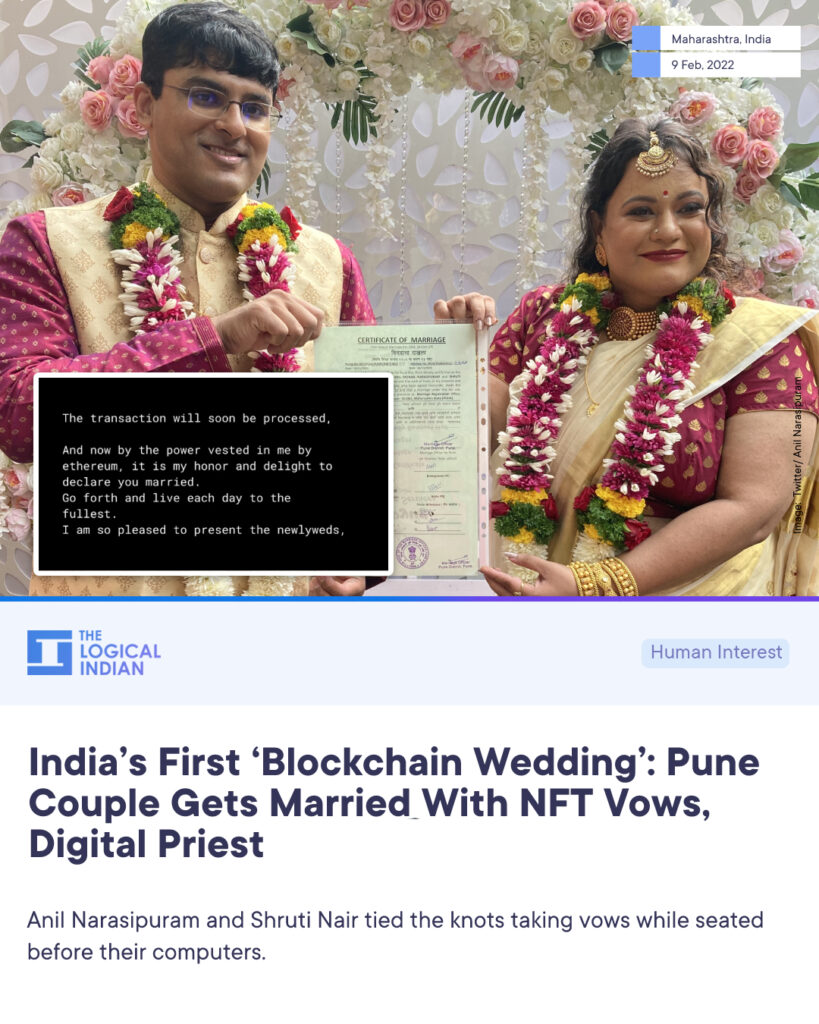Marriage – a social institution which is fundamentally patriarchal in nature – is considered one of the basic units of civilized society. The ritualisation of this institution has been the norm of human society for centuries. What has essentially been an exchange of women, for reasons that have differed across time and space, though which has mainly been for the purpose of procreation, has transitioned into a sacramentally-ordained way of achieving stable status in society. Marriage has been used as means of economic exchange, pathways for generational continuity, forming political alliances, and even as a social ladder for many groups. The legalization of the institution of marriage has only added to the prime place it holds in the community.
Heterosexual marriages have been the accepted norm in the society, the aim of which has been to procreate and continue the patriarch’s lineage. Practices like female seclusion, sex segregation and eventually of ‘kanya-daan’, the giving away of one’s daughter in marriage which is considered as the most meritorious act by the head of the bride’s family, consequently resulting in the patrilocal family structure and relatively gendered division of labour. Such patriarchal elements have helped in ensuring control over female sexuality for centuries. Another historical aspect influencing the ritualized practice of marriage and especially mate selection is the issue of caste. According to the traditions that caste propagates, one should marry outside of one’s own gotra, that is, people who share stimulated patrilateral common descent. Hence, endogamy in this sense is prohibited in the caste system. However, it is expected to form marital alliances with a partner of one’s own caste. This invariably aids in sustaining the rigid caste system. Inter caste marriages were socially disapproved of, and in many cases violently punished. Cases of honour killings of young couples, belonging to different castes and/or religions, who refuse to accept the social norms are not a new phenomenon.

In fact, the concept of marriage is so ingrained in the minds of people that the queer movements across countries have the legalisation of same-sex marriages as one of their primary demands. It, in a way, symbolizes the stamp of societal approval towards their sexuality and thus becomes an important marker of their standing in society. Today, it operates as a social sanction for cohabiting couples. The conceptualisation of live-in relationships, even in the 21st century, has not yet been formulated as an alternative form of a household unit in India. The groups supporting the framework of marital relationships today – which still account for the majority of the population – highlight its ability to maintain discipline and order in the society, the appropriate division of responsibilities of the offspring, to continue to build upon the household unit, and even to have a partner to share one’s life with. In other words, marriage is still seen as an important aspect of society and any disagreement with this notion, for instance decision of not marrying ever, divorce or of being in a live-in relationship, renders shame upon the said partners as well as their families.
Yet there has been a change in the meaning and understanding of the concept of marriage. A major factor in this transition has been the empowerment of women. Education and the subsequent opening up of economic opportunities have enabled them to be financially independent which has granted them a certain degree of autonomy. This has been a gradual change, resulting in an increasing percentage of inter-caste and inter-religious marriages, with a decreased grade of social chastisement.

Every new age has brought changes to the way we view marriage. The digital age has also been a stimulator for the same. A new trend of online marriages, digital priests and virtual meets is now beginning to revolutionise the system with an interesting twist. Moreover, a major contributing factor in our present times is the COVID -19 pandemic, which forced the world to go digital in a matter of weeks and whose consequences are sure to stick around. The question that might now arise would be about the perceived need for the performative rituals that govern the traditional marriage ceremonies. India too witnessed its first ‘blockchain’ marriage early this year. The Pune couple made their marriage ‘blockchain official’ with an Ethereum smart contract that consecrated their commitment to each other in the form of an NFT (non-fungible token), minted on OpenSea.

It is crucial to recognize the fact that the stakes are different now. People no longer marry just for the sake of procreating to carry on the bloodline. They consider factors beyond the orthodox requirements of selecting a mate. Although we do find cases of caste-based discrimination in the process (online marriage websites, and so on), the partners do have higher say in the matter. Sanctity of marriage as an institution can be identified as a perpetual fact that remains unchallenged throughout, from rights of LGBTQ community to marry to assuming the next stage of a live in relationship to be marriage. The thought is an eternal conundrum.

Khyati is a third year History student at Lady Shri Ram College for women. She believes that words have the power to change the society, and tends to use these. Interested in research, she's expecting to pursue the same in furure.



Woh I like your posts, saved to fav! .
I genuinely enjoy looking at on this site, it contains fantastic blog posts. “The living is a species of the dead and not a very attractive one.” by Friedrich Wilhelm Nietzsche.
I truly wanted to jot down a quick note in order to express gratitude to you for all the wonderful items you are posting at this website. My particularly long internet search has at the end been paid with excellent knowledge to share with my good friends. I would believe that many of us visitors actually are rather blessed to be in a great community with so many perfect individuals with great secrets. I feel truly blessed to have used your website page and look forward to tons of more thrilling times reading here. Thanks a lot once more for everything.
I got what you intend,saved to bookmarks, very decent website .
You have brought up a very good points, regards for the post.
I have read several excellent stuff here. Certainly price bookmarking for revisiting. I wonder how a lot attempt you place to create this type of great informative site.
Hmm is anyone else having problems with the pictures on this blog loading? I’m trying to figure out if its a problem on my end or if it’s the blog. Any suggestions would be greatly appreciated.
I’m very happy to read this. This is the type of manual that needs to be given and not the random misinformation that is at the other blogs. Appreciate your sharing this greatest doc.
Nice read, I just passed this onto a friend who was doing a little research on that. And he just bought me lunch as I found it for him smile Therefore let me rephrase that: Thanks for lunch!
I savour, cause I found just what I was having a look for. You have ended my 4 day lengthy hunt! God Bless you man. Have a great day. Bye